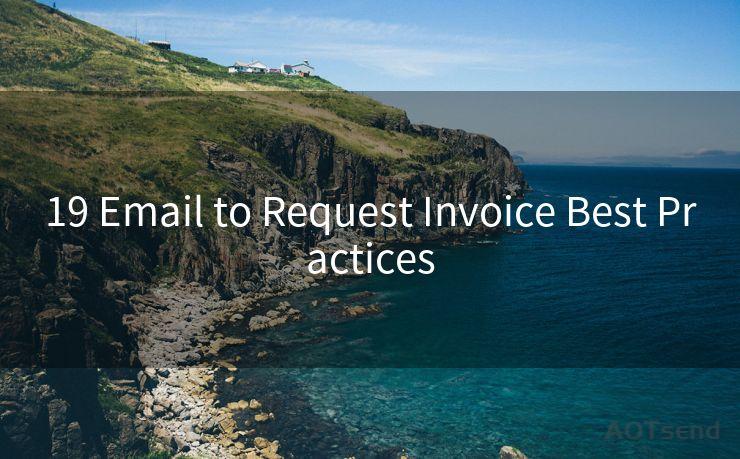19 Email to Request Invoice Best Practices




When it comes to requesting an invoice from a supplier or service provider, clear and professional communication is key. Here are 19 best practices to keep in mind when crafting your email to ensure a smooth and efficient process.
1. Use a Professional Email Address
Start by using a professional email address to send your request. This lends credibility to your inquiry and ensures that it will be taken seriously by the recipient.
2. Clear and Concise Subject Line
Craft a subject line that is direct and to the point, such as "Request for Invoice - [Your Company Name]". This helps the recipient understand the purpose of your email at a glance.
3. Formal Greeting
Begin your email with a formal greeting, addressing the recipient by name if possible. This personal touch goes a long way in establishing a professional rapport.
4. Introduce Yourself and Your Company
Briefly introduce yourself and your company, explaining your role and the nature of your business. This provides context for your request and helps build trust.
5. State the Purpose of Your Email
Clearly state that you are requesting an invoice for services rendered or products purchased. Specify the date of the transaction and any relevant details.
6. Provide Accurate Information
Include all the necessary information for the invoice, such as your company's name, address, contact information, and the specific services or products you received.
7. Request Itemized Invoice
Ask for an itemized invoice that breaks down the costs of each service or product, including any taxes or additional fees. This ensures transparency and accuracy.
8. Specify Invoice Delivery Method
Indicate how you would like to receive the invoice, whether it's via email, postal mail, or another preferred method.
9. Request a Timeline
Ask for an estimated timeline for when you can expect to receive the invoice. This helps you plan your payments and accounting processes accordingly.

10. Express Appreciation
Thank the recipient for their attention to your request and express appreciation for their services.
11. Close Professionally
End your email with a professional closing, such as "Sincerely" or "Best regards," followed by your full name and contact information.
12. Proofread and Edit
Before sending, proofread your email for any grammatical or spelling errors. A polished and error-free email reflects positively on your professionalism.
13. Follow Up if Necessary
If you don't receive a response within your requested timeline, send a follow-up email to confirm receipt of your initial request.
14. Maintain Professional Tone
Throughout your email, maintain a polite and professional tone. Avoid using colloquial language or slang.
15. Be Specific About Dates and Amounts
When referencing transactions, provide specific dates and amounts to avoid any confusion or delay in processing your invoice.
16. Attach Relevant Documentation
If applicable, attach any supporting documentation that may assist in the invoice preparation, such as purchase orders or contract agreements.
17. Consider Privacy and Security
When sharing sensitive information, ensure you are using a secure email platform or consider alternative secure methods of communication.
18. Use Templates for Efficiency
If you frequently request invoices, consider creating an email template to streamline the process and ensure consistency in your communications.
19. Keep It Simple
🔔🔔🔔
【AOTsend Email API】:AOTsend is a Managed Email Service for sending transactional emails. Support Email Types: reminders, authentication, confirmations, notifications, verification codes, invoices, password resets, account activations, billing statements, two-factor authentication (2FA), and one-time passwords (OTP) emails, etc. $0.28 per 1000 Emails. 99% Delivery, 98% Inbox Rate.
You might be interested in:
Why did we start the AOTsend project, Brand Story?
What is a Managed Email API, How it Works?
Best 25+ Email Marketing Platforms (Authority,Keywords&Traffic Comparison)
Best 24+ Email Marketing Service (Price, Pros&Cons Comparison)
Email APIs vs SMTP: How they Works, Any Difference?
Avoid unnecessary complexity in your email. Stick to the facts, be direct, and keep the message focused on your invoice request.
By following these best practices, you can ensure that your invoice request emails are clear, professional, and effective, leading to a smoother and more efficient invoicing process for both you and your suppliers or service providers.




Scan the QR code to access on your mobile device.
Copyright notice: This article is published by AotSend. Reproduction requires attribution.
Article Link:https://www.mailwot.com/p5863.html



